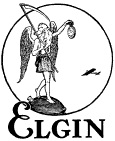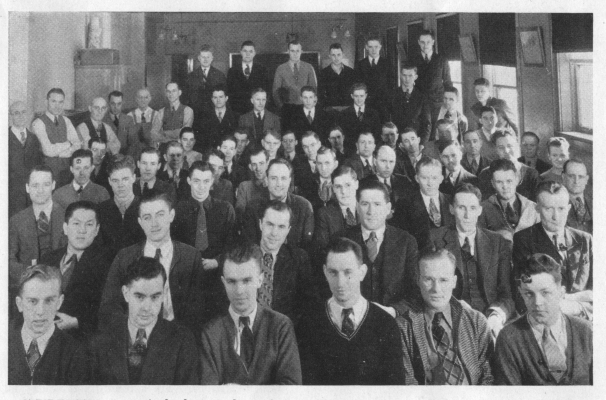Elgin Watches

Elgin Watches |

|
The Elgin Watch CompanyThe Elgin watch company was founded in 1864 in Elgin Illinois as National Watch Company. In 1874 the name was changed Elgin National Watch Company. Between 1864 and sometime in the 1960s, Elgin manufactured 10s of millions of pocket and wrist watches. Elgin pocketwatches from its early years are particularly interesting because of the methods and philosophy of the Elgin company. Elgin used what were at the time quite advanced tools, techniques and labor practices to achieve a very high quality product, in high volumes, at a relatively affordable price. Elgin watches were created using mechanized, repeatable processes, organized quality control and standardized, interchangeable, parts. The result was a product of high quality made in large quantities that dwarfed Elgin's competitors. Prior to Elgin's time, watches were made completely by hand, frequently by a single craftsman, from start to finish. Repairs could only be completed on such watches by someone with sufficient skill to fabricate replacement parts from raw material. Elgin watches on the other hand, were mass manufactured and highly standardized. Spare parts parts were provided by Elgin that were drop-in replacements for the originals. Elgin was extremely successful with this strategy. The company introduced more than half the watches made in America from 1920-1928. An Elgin advertisement in 1928 claimed that there were more than 14,418 retail jewelers in the United States and all but 12 carried Elgin watches. Yet, Elgin recognized that craftsmanship and design were highly valued by the customer. A great deal of care and hand work went into these watches. The results were every bit as beautiful, elegant and as accurate as much more expensive competitors. These watches are a product of a unique moment in industrialization and technological development. They were made on the cusp of mass manufacture, as we know it today, yet we would also say they were hand-made, and clearly by a labor force of significant skill. They are uniquely American, in everyway.
|
|
||||
The Elgin FactoryElgin's massive factory was built on 35 acres of land denoted by the city for the factory itself and housing for workers and staff. The initial construction was completed in 1866, although there were a number of additions over the years. At its peak it employed over 4500 people, more than half of which were women. The factory complex was completely destroyed in 1966.
|
|||||
|
|
The Elgin Watchmakers' CollegeElgin founded a watchmakers' college near its factory in 1920 in order to create a pool of watchmakers trained in the craft, and in Elgin watches specifically. Although the school operated independently from the Elgin company, the motivation was clear. Elgin's interchangeable, standardized parts system, together with a trained labor force of commercial watchmakers was sure to promote Elgin's product line.
The school operated until 1960. The building has since been torn down. |
||||

|
My Grandfather, Everett Sexton, attended the Elgin Watchmakers' College after he graduated from high school. His instructors there were among the most renown watchmakers of the time. He is gone now, but Elgin pocketwatches remained favorites throughout his career. Here's the watch school's students and and staff in a photo from a 1936 issue of The Watch Word. Everett Sexton is the second from the left in the first row. |
||||
The Elgin ObservatoryThe Elgin company was the only watch company of its day to construct an observatory, in 1910, dedicated to measuring time. According to my Grandfather who toured the observatory, there was in use there a fixed telescope. An operator would lie on his back and observe the transit (meridian crossing) of stars (later images show a seated operator at the telescope, it may have been updated at some point). At the moment of the transit, the observer would press a button activating an electrical relay and setting two Riefler chronographs to exact time. The chronographs were kept in a separate room which only two people were allowed to enter at a time in order to avoid temperature shifts. The room was heated to a constant 81 degrees by dozens of light bulbs all around the room. Each light bulb had an individual thermastat turning it on and off as needed to maintain temperature. To control air pressure, each chronograph was sealed in a glass enclosure connected to an apparatus allowing air to be pumped in or out as needed. Using this facility, Elgin was able to accurately measure time to within hundredths of a seconds. Elgin operated this system until 1958 when technology began providing better methods. The observatory structure still exists today at 312 Watch Street. It is owned by the city and operated by the Elgin school distict as the Elgin U-46 Planetarium.
| |||||
|
|
||||

|
|
|||
|
|
||||
Comments to jsexton@elgintime.com